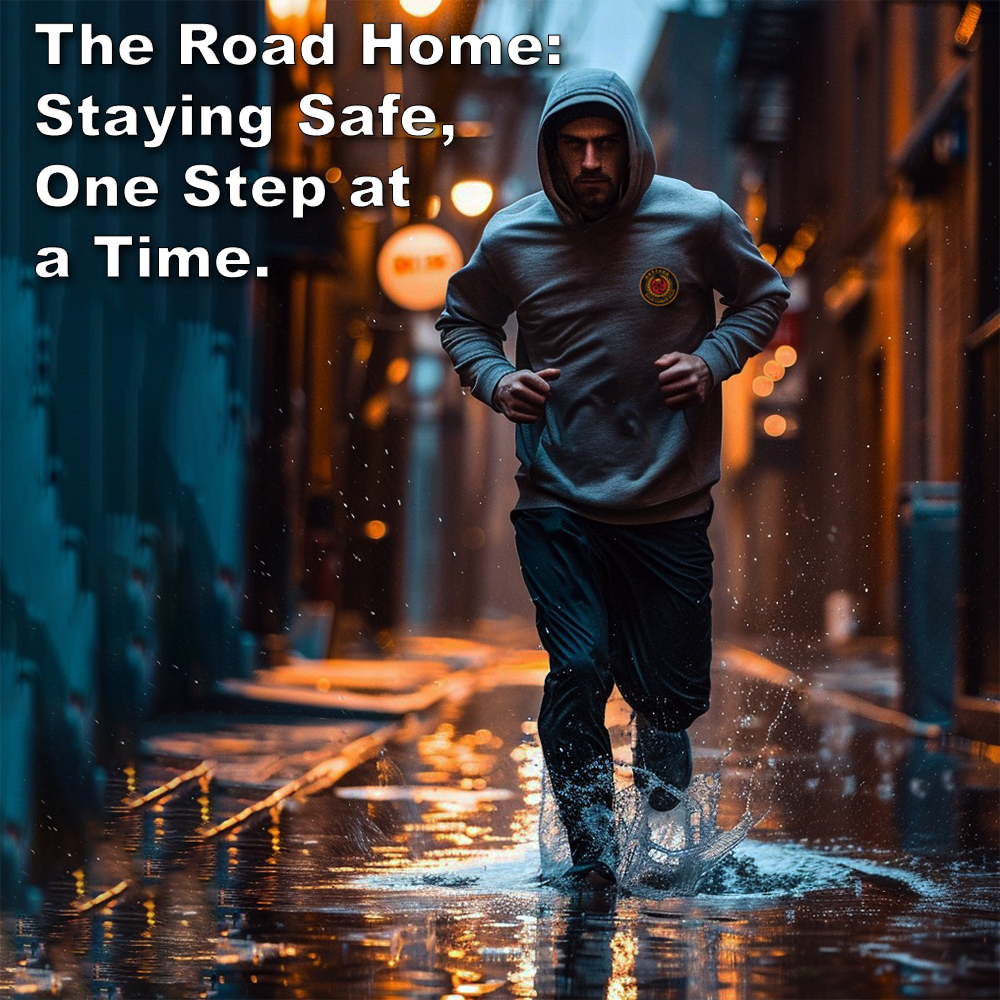
(Approx 2 minute 35 second read)
What does personal protection mean today? Let’s face it, it often has little to do with what happens in most martial arts classes.
.
If you’re thinking about self-protection and you’ve got no choice but to fight, you need to act. Take control, dominate the attacker, and get out. Yes, get out. Escaping should always be the goal.
.
This is where a lot of practitioners miss the point. They get stuck thinking only about fighting. But real violence doesn’t follow a script. It comes out of nowhere, catches you when you’re distracted or comfortable, wrapped up in your own thoughts. And don’t kid yourself – you will be surprised.
.
It’s not just physical skills that matter. It’s how fast you can recover from that surprise, or from being injured. Freezing is the real problem, not figuring out what to do.
.
There’s no one-size-fits-all solution. In most real-life situations, you only get one shot to act.
.
Let me share a story. Years ago, I was out for an evening run. The streets were quiet, lit well enough, and ahead of me, I saw two guys walking along the footpath. I shifted to the outside to give them space. In hindsight, I should’ve moved to the inside, away from the traffic. But before I knew it, I was shoved hard, right into oncoming cars. I barely avoided being hit.
.
What did I do? The fighter in me came out. I didn’t think. I responded. The bigger of the two ended up face down in the dirt, and the other took off, surprised by how I had reacted. Adrenaline pumping, I let out a few choice words and carried on with my run. But not far down the road, I hit a wall. The adrenaline dump left me gasping for breath, feeling like I couldn’t go another step. And I was fit, very fit. Yet there I was, sitting on the curb, trying to pull myself together.
.
Looking back, I made the wrong call. I should have de-escalated. I should have just walked away. At the time, I was competing regularly, I was no champion, but winning some tournaments and placing well in others.
.
So, had my training failed me? No, but my instincts did. And my training shaped those instincts.
.
That’s the thing – how you train is how you react. I trained to fight, so I fought. And honestly? I was lucky. It could’ve gone so much worse.
.
That’s the problem with combat sports versus real-world combat. On the mat, no one’s trying to kill you, or shove you into oncoming traffic. Even in the most intense competitions, there are rules, refs, and safety nets. You know, deep down, that if it gets too dangerous, the fight stops.
.
That’s not how the real world works.
.
So what are you training for? Are you practicing to win a competition, or are you preparing for self-protection? Because those are two very different things.
.
Training for competition is incredible – it builds discipline, athleticism, and the ability to compete under pressure. But self-protection? That’s a different game entirely. It’s not about techniques; it’s about principles: awareness, avoidance, escape.
.
That night on my run, I had an exit. I should have taken it. Instead, I escalated. I let my pride get in the way. Self-protection isn’t just about knowing when to fight. It’s about knowing when not to fight. Violence should always be the last resort. That night, I let my ego and instincts choose for me. And that’s not the kind of decision training should lead you to.
.
Train with purpose, act with clarity, and always keep your priorities straight – and unlike me that night, try get home safe.
.
.
Written by Adam Carter – Shuri Dojo
.
.
Photo Credit: Stockcake
